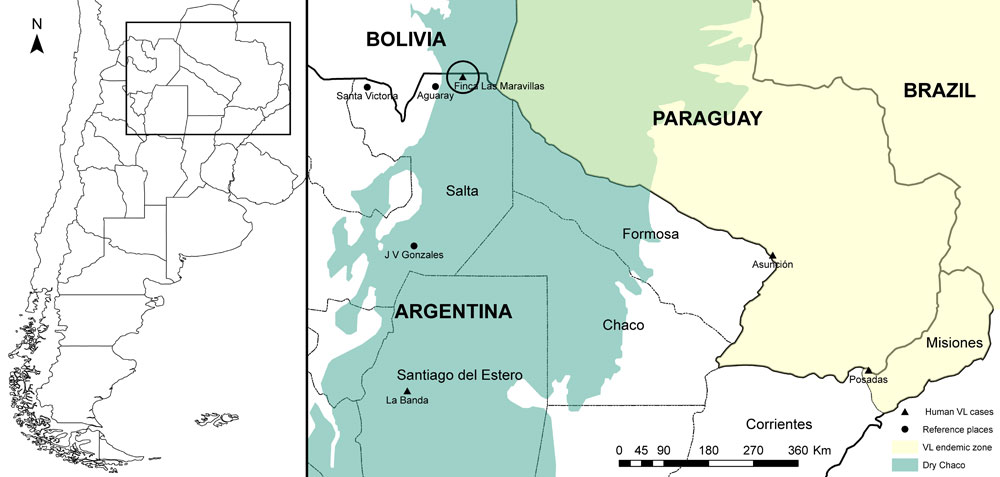Volume 18, Number 2—February 2012
Letter
Leishmania infantum and Human Visceral Leishmaniasis, Argentina
Figure A1

Figure A1. Incidence of visceral leishmaniasis (VL) in northern Argentina. Map at left indicates location of study area (right). Circle indicates location of farm where the patient (44-year-old man) in this study worked. Light green area indicates dry Chaco region, where VL is endemic and human cases have been found.
Page created: January 12, 2012
Page updated: January 12, 2012
Page reviewed: January 12, 2012
The conclusions, findings, and opinions expressed by authors contributing to this journal do not necessarily reflect the official position of the U.S. Department of Health and Human Services, the Public Health Service, the Centers for Disease Control and Prevention, or the authors' affiliated institutions. Use of trade names is for identification only and does not imply endorsement by any of the groups named above.